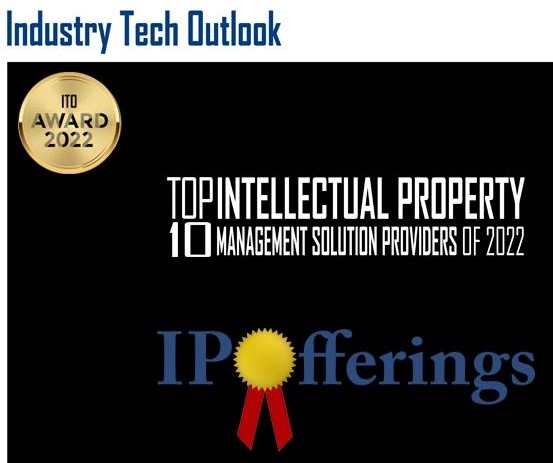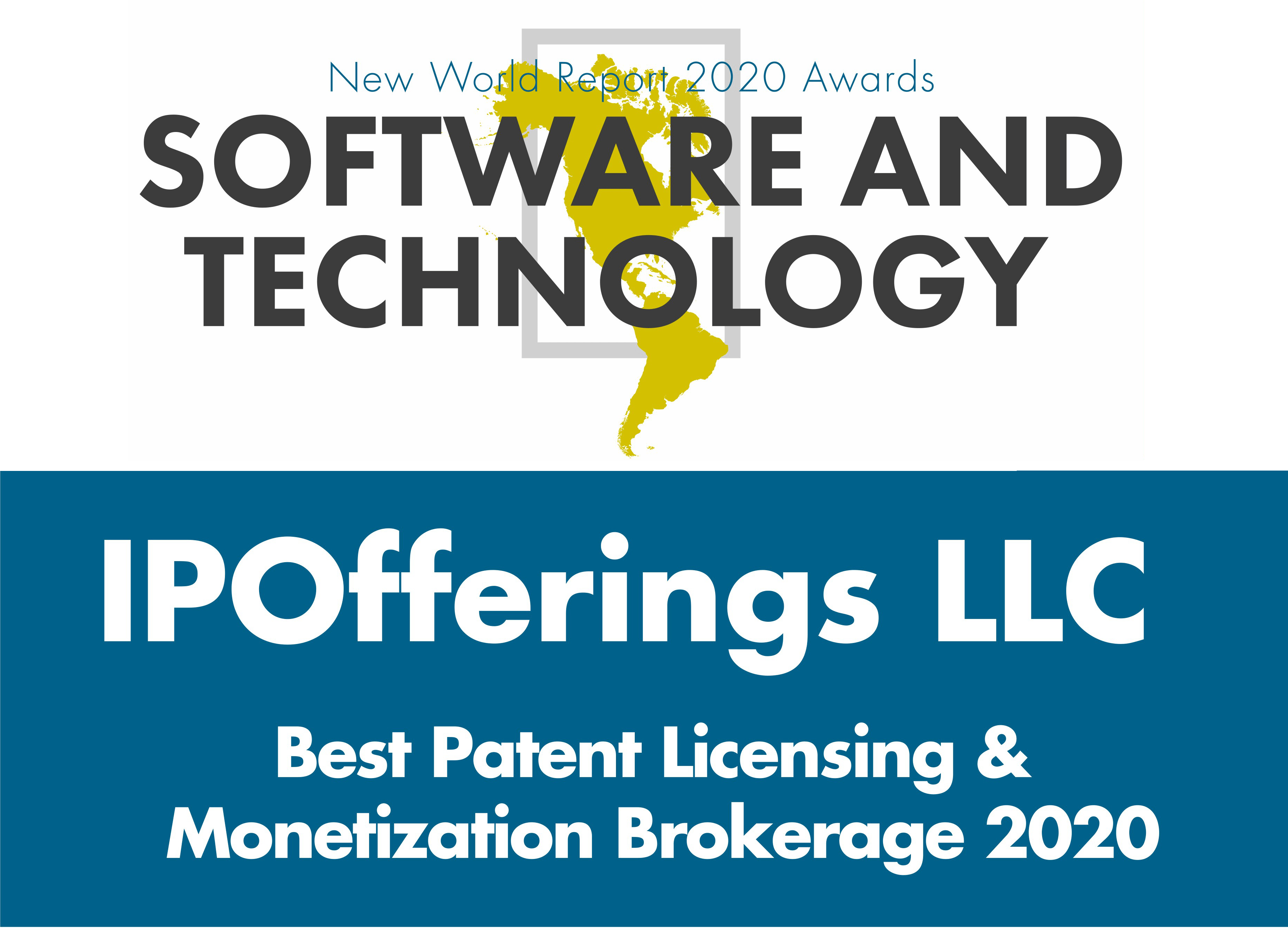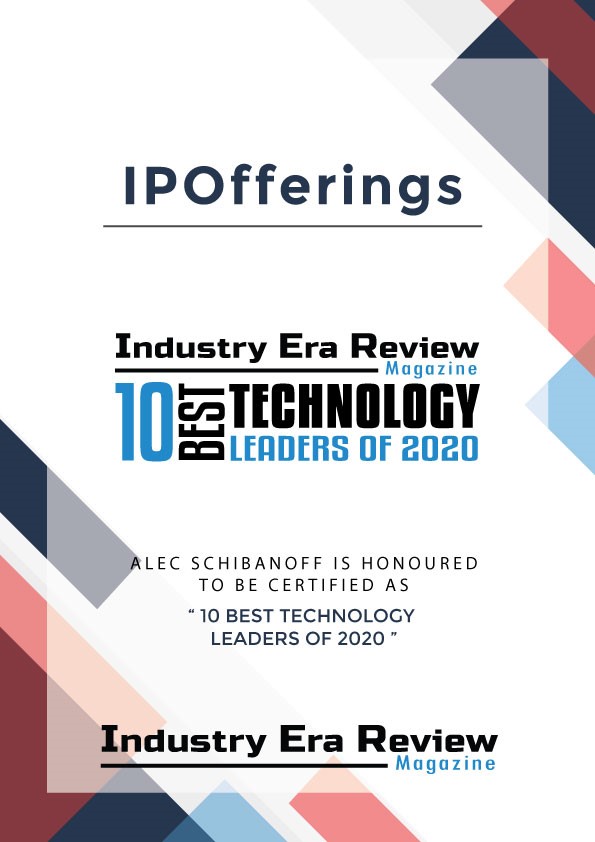Patent MarketPlace: Consumer Electronics Patents and Trademarks for Sale
 Zero-Upkeep Smart Waterless Fountain (Rawlyk): U.S. Patent No. 12,270,517
Zero-Upkeep Smart Waterless Fountain (Rawlyk): U.S. Patent No. 12,270,517
Decorative water fountains are growing in popularity. For example, Walmart stocks over 1,000 indoor fountains! They offer visual elegance and acoustic serenity in homes, offices, spas, and hospitality environments. Yet traditional models come with one major drawback – maintenance! Most require frequent draining, disassembly, cleaning, drying, re-assembly, and refilling – an inconvenient and often neglected process.
This patented innovation eliminates those burdens entirely. The Smart Waterless Fountain uses customizable, programmable LED arrays to simulate the appearance of flowing water – without actually using any water. The illusion is so refined that it closely mimics the movement and shimmer of real water. An integrated smart speaker delivers a curated library of ambient soundscapes, enriching the sensory experience and deepening the fountain’s calming effect. Smart home compatibility is built in, utilizing app/voice control that integrates seamlessly with Alexa and Google Home.
U.S. Patent No. 12,270,517 for “Smart waterless fountain” covers both the waterless fountain and a potential retrofit kit for converting existing water-based fountains into maintenance-free models. This opens the door for manufacturers to introduce a new category of sustainable, zero-maintenance fountains that elevate ambiance while reducing operational complexity.
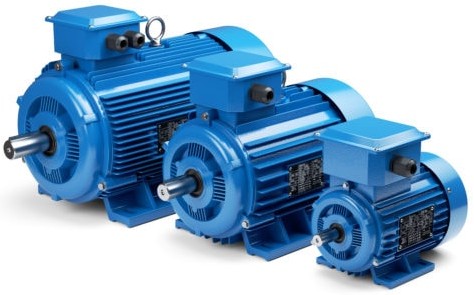 Next-Generation Electric Motor (Bosco): International Patent Portfolio
Next-Generation Electric Motor (Bosco): International Patent Portfolio
We are surrounded by electric motors – at home, at work, in school, in our cars, at the health club – you name it. The HVAC we all rely on uses electric motors. Gas-powered autos use electric motors for the power windows and power seats. Factories use electric motors to drill, grind, polish, and move parts. Home appliances use electric motors. Computers use electric motors to cool them. And then, of course, there are all those electric vehicles. What this means is that any improvement in the efficiency or reduction in the size of an electric motor will have a widespread effect across many technologies and sectors.
This international patent portfolio introduces a different winding method for electric motors that can unlock significant performance improvements, add safety factors, and reduce motor and component size while using the materials currently used to make electric motors. This patented technology:
- Boosts torque response, RPM, and power density
- Implements best-in-class safe-mode operation
- Simplifies parallelization
- Enables potential motor downsizing of up to 40% depending on the specific application.
International Patent Portfolio
- U.S. Patent No. 11,837,928: Electric motor and winding method
- European Patent 3625875: Electric motor and winding method
- China Patent 11080019: Electric motor and winding method
- Japanese Patent 7309693: Electric motor and winding method
- Korean Patent 102553974: Electric motors and winding methods
- Canada Patent 3063644: Electric motor and winding method
- Brazil Patent 112019024422: Electric motor and winding method
- Eurasian Patent 040717: Electric motor and winding method
- India Patent 532875: Electric motor and winding method
This portfolio – or selected patents from the portfolio – will enable any manufacturer of electric motors to leapfrog the technology of all of its competitors and manufacture electric motors that are more efficient, more compact, and safer to operate!
 Universal Supports for Electronic Devices (Alonzo): Three U.S. Patents
Universal Supports for Electronic Devices (Alonzo): Three U.S. Patents
It seems like a lifetime ago that people read books, newspapers, and magazines – actual ink-on-paper books, newspapers, and magazines. Today, we read e-books, we get our news from a smart phone or tablet, and students do their homework on laptops. The world has changed. And those changes have resulted in the need for a device to hold all these devices while we are reading from them.
This three-patent family addresses exactly that need. It creates two universal devices that hold an e-book, smartphone, tablet, or laptop in just exactly the right position for the user to read – leaving the reader’s hands free to eat, drink, take notes, type, or any other activity – except driving! U.S. Patent Nos. 9,605,790 and No. 12,007,064 create a support for larger devices like e-books and tablets. It features a slot that holds the device so it can be positioned at the most comfortable angle for reading. U.S. Patent No. 12,188,607 creates a support for small devices that are supported from the sides by two arms. When not in use, it can be stored in a backpack, bag, or business case.
U.S. Patent Nos. 9,605,790 and U.S. Patent No. 12,007,064 for a “Universal support stand for portable electronic devices” and U.S. Patent No. 12,188,607 for a “Compact support stand for a portable electronic device” would enable any manufacturer of smartphone, e-book, tablet, and laptop accessories to offer a product line that will make it easier for users of all of these devices to read from them hands-free.
 Solar-Powered Smart Phone, Laptop, or Tablet (CW Enterprises): U.S. Patent No. 9,960,635
Solar-Powered Smart Phone, Laptop, or Tablet (CW Enterprises): U.S. Patent No. 9,960,635
There are few things more frustrating than a smart phone, laptop, or tablet with a dead battery! You cannot make a call, you cannot receive a call, you cannot send a text, you cannot receive a text, you cannot read your old texts, you cannot send an email, you cannot receive an email, you cannot read your old emails, and you cannot access the web. You might as well be stranded on an island in the middle of nowhere! You are completely and totally out-of-touch with the rest of the world! Surely there must be a way to keep these critical electronic devices charged so you are still connected when you forget to plug it into its charger. Now there is!
This patent creates a next-generation smart phone, laptop, or tablet that comes with a small solar panel that converts sunlight into a trickle of power for the device’s battery. While this solar panel is small – too small to keep the device’s battery fully charged – it does provide a supplemental source of power that will keep the device’s battery from going completely dead. When it is not in use, just leave your smart phone, laptop, or tablet lying on a desk or table, and the light in the room will be converted into a flow of electrons that will give the unit’s battery a consistent charge.
U.S. Patent No. 9,960,635 for a “Wireless battery recharger and application” will enable any smart phone, laptop, or tablet manufacturer to create the first mobile device with a battery that will never go dead!
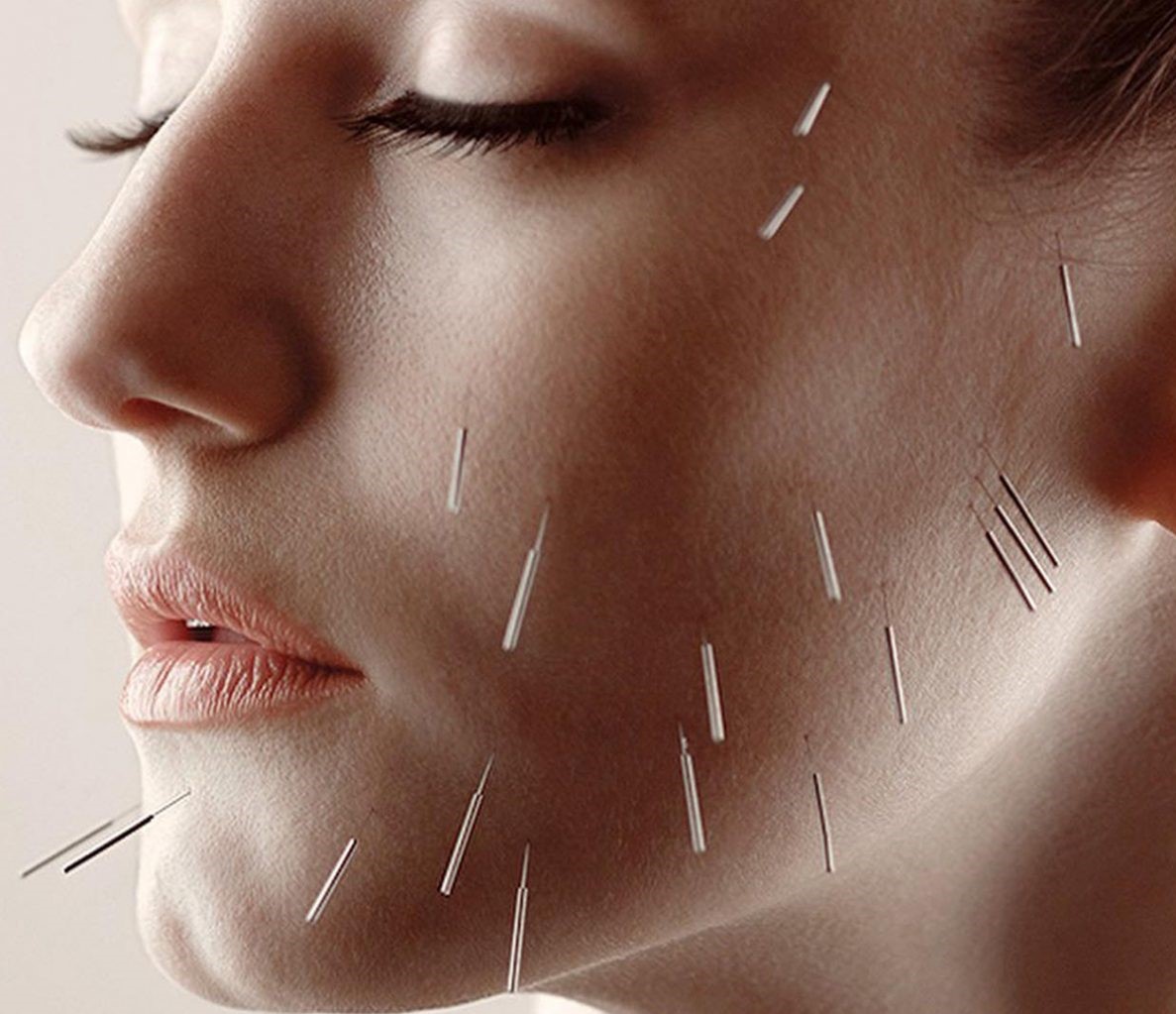 Do-It-Yourself Acupressure Facial (Touch + Glow): U.S. Patent Nos. 12,023,298 and 12,029,702
Do-It-Yourself Acupressure Facial (Touch + Glow): U.S. Patent Nos. 12,023,298 and 12,029,702
Acupuncture has been around for over two thousand years and has been a proven treatment for numerous ailments and conditions. One very effective use for acupuncture is to tighten the skin, removing and softening wrinkles to create a fresher, younger, look and feel. Wouldn’t it be great if we could have the benefit of acupuncture without all those needles? With acupressure we can.
This patent family creates a non-invasive, therapeutic wand with point prescription acupressure protocol. The user follows the instructions by touching the tip of the wand to specific points on the face. The tip of the wand vibrates while it also produces a magnetic field, and the combination of the two tightens the skin as the wand passes over it, significantly softening wrinkles. This simple process is easy, painless, safe, and highly effective. The wand includes a printed circuit board and timer that guides the user through the massage.
Not only can U.S. Patent Nos. 12,023,298 and 12,029,702 for a “Therapeutic wand system, kit, and method” be used for a highly effective acupressure facial, its versatility gives the owner the flexibility to create therapeutic acupressure point remedies for pain management, sleep disturbances, stress, and other ailments. This patent family would be a strategic acquisition for any manufacturer in the healthcare or beauty industry.
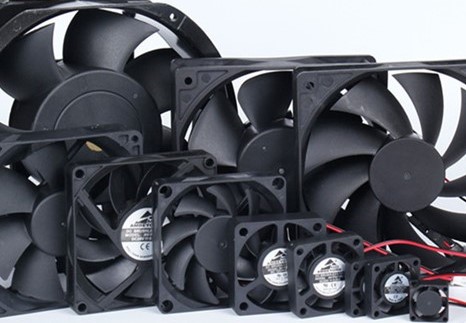 Higher-Efficiency Cooling Fans (Stokes Technology): International Patent Portfolio
Higher-Efficiency Cooling Fans (Stokes Technology): International Patent Portfolio
Cooling fans are everywhere. Every electrical and electronic device – from computers to refrigerators and air conditioning systems and everything in between – generate heat that has to be dispelled. The most efficient way to do that is with a fairly simple electric fan that expels the hot air to the exterior of the electrical or electronic device. Some of these fans run 24/7 while others are on a thermostat that turns them On and Off. Not much innovation has occurred with these fans over the last century or so.
Until now, that is! The invention team behind this international patent portfolio has created optimized designs that significantly outperform all cooling fan products currently on the market. The patents in this portfolio cover:
- A single-motor, single-rotating fan with the same performance as a counter-rotating fan, offering lower cost, better reliability, and reduced vibration and noise
- A cost-effective, easily produced molding method for overlapping blade designs without geometry constraints, while maintaining high air pressure performance
- An optimized counter-rotating structure with better performance than current high-end fan products
- A design for a thin, counter-rotating fan that offers significantly better performance than current single-rotating fans
- Unique fan geometry for both single and counter-rotating fans that significantly enhances performance compared to fans current on the market
International Patent Portfolio
- U.S. Patent No. 11,333,172: Air moving device with stator blade structure
- U.S. Patent No. 11,359,641: Air moving device with blade tip of variable curvature
- U.S. Patent No. 11,486,402: Counter-rotating axial air moving device structure
- U.S. Patent No. 11,512,704: Counter-rotating axial air moving device
- U.S. Patent No. 11,536,279: Thin type counter-rotating axial air moving device
- U.S. Patent No. 11,873,835: Manufacturing method of axial air moving device with blades overlapped in axial projection
- China Patent 115978006: Fan device with stationary blade structure
- Philippine Patent Application 12023050093
- Vietnam Patent Application 1-2023-01349
- U.S. Patent No. 9,779,705: Musical sound generator
- Chinese Patent 106463105: Musical tone generating apparatus
- European Patent 3132439: Musical sound generator
- Japenese Patent 6389272: Music generator
- Korean Patent 101890052: Musical sound generator
- Australian Patent 2015246705: Musical sound generator
- Russian Patent 2651540: Generator of musical sounds
- Canadian Patent 2941887: Musical sound generator
- South African Patent 201607576: Musical sound generator
- U.S. Patent No. 9,807,996: Bug eater
- Chinese Patent 109195865: Insect trap
- U.S. Patent No. 9,999,213: Multifunction photo electro acoustic ions drone
- Chinese Patent 110461147: Multifunctional photoelectric acoustic ion unmanned aerial vehicle
- Richer Sound Quality: The two-way patented loudspeaker arrangement – which can also be extended to a three-way coaxial setup – provides smooth transition of sound throughout the entire effective frequency range.
- Better Sound Performance: Compared to ordinary coaxial loudspeakers, speakers using the Magnexial technology covered by this portfolio deliver clearly higher sound pressure.
- Higher Sensitivity: Magnexial technology provides high-performance, wide-frequency bandwidth and also high sensitivity.
- Reduced Material: Because it reduces the size of the speaker configuration, it also reduces raw material costs!
- Dynamic three-dimensional (3D) desktop icons
- Displays a shortcut key area and a status area on the user interface, and adjusts the user interfaces according to the users
- Customizable and dynamic menus, updated based on frequency of use
- Multi-touch operations help to easily copy, paste and move files
- Smart automatic magnification of web pages
- Search phone numbers based on input image of a person
- Detects motion and identifies the magnitude of the motion without peripherals
- Customizable physical controls on eBook reader
- Smart watches or wearable devices with modular units
- User programmed communication responses
- Implementations in relatively new Smart Jewelry
- Easy, remote and subtle communications between two individuals
- Improvised uses in smart wearable to augment human lifestyle
- Applications in upcoming internet of things (IoT)
- Allows you to stay better engaged with your environment
- Multiple adjustable processing modules in a single wearable device
- Executive Summary
- Patent Overview and History
- Technology and Investment Summary
- Market Research
- Company Analysis
- Illustrative Evidence of Use (if applicable)
- Agricultural
- Artificial Intelligence
- Automotive/Vehicular
- Aviation
- Banking/Financial Services
- Beverages/Foods/Nutritional Products
- Boat and Marine
- Cannabis and Medical Marijuana
- Construction/Building Trades
- Consumer Electronics
- Consumer Products
- Digital Currency/Cryptocurrency
- Drones/UAVs
- E-Cigarette & Vaping Technology
- E-Commerce
- Education & Training
- Energy/Power Generation
- Health and Beauty Products (HBP)
- IoT Patents/Internet of Things
- Manufacturing
- Medical Electronics and Devices
- Mining/Drilling
- Mobile/Wireless
- Network/Location-Based Services
- Optics/Displays/Video/LED
- OTT Patents/Over-the-Top
- Packaging
- PCs and Notebooks
- Pharmaceuticals
- Robotics/Automation
- Semiconductor
- Shoe & Apparel
- Smart Home/Smart Office
- Social Media
- Software, Apps, and Architecture
- Sports/Sporting Goods
- Telecommunications/IP Telephony
- Warehousing/Material Handling
- Other
- Go to Patent Index
- Return to Patent MarketPlace
This patents in this portfolio would enable any manufacturer of cooling fans to introduce the next-generation of fans that are less expensive while offering greater performance!
 Portable Ink Jet Printer (Amegashie): U.S. Patent Application 20230321996
Portable Ink Jet Printer (Amegashie): U.S. Patent Application 20230321996
There was talk a few decades ago of a “paperless office” in which all documents would be digital and there would be no need for paper. It never happened. We buy and consume paper by the reem, carton, and pallet, and the paper companies are all doing fine. The printers that consume those reems of paper are usually in an office – either a conventional office or a home office. There are multi-function units that not only print, but also scan, fax, and copy. Ink jet technology has become the leading technology option for low-volume printers. What is missing, however, is a truly portable printer for the student, teacher, sales rep, accountant, auditor, consultant, service technician, artist, and anyone else who needs to print a document – an estimate, an invoice, a contract, a proposal, a report, you name it – while he or she is NOT in the office but out in the field.
This patent application creates a thin, compact, lightweight ink jet printer than can fit in a briefcase or computer bag so the user can take it into the field. It connects to a laptop, tablet, or smart phone and prints out a document in seconds. An estimate, invoice, receipt, drawing, proposal, or other document can be produced on-site when needed! How many times has anyone of us emailed a document to someone with the understand that person would print it out, but he or she never did? This compact printer puts a document in that person’s hands immediately!
U.S. Patent Application 20230321996 for a “Ultra-thin portable printer” would enable any ink jet printer manufacturer to introduce a new line of compact portable printers, both creating and owning a new market segment!
 Human Body Power Generation (Ebaneh): U.S. Patent Application 20240113559
Human Body Power Generation (Ebaneh): U.S. Patent Application 20240113559
In "The Matrix" we are horrified to learn that the human race has been tricked into believing in a fictious reality created by supercomputers that now run the world. Worse even, we learn that human bodies are now being used to produce energy for those supercomputers! While that is pretty scary, it is not too far from reality. Human bodies DO produce substantial energy in the form of heat and movement. Why could that otherwise free energy not be captured and used?
This patent application creates a graphene-integrated energy harvesting system that captures heat, movement, and light that is converted to electrical current, stored in supercapacitors, and used to power personal devices. You may want to read that sentence again. A device based on this patent filing will capture energy from its owner, and convert it to electrical current to charge that same person’s smart phone or other electronic device! A person’s hat, wrist device, or shoe captures body heat and movement, while an umbrella captures light, making each of us walking power generators!
U.S. Patent Application 20240113559 for a “Graphene-integrated personal energy harvesting system for electronic devices” would enable any consumer electronics manufacturer to bring to market technology that will use a smart phone owner’s body to generate electrical current to charge his or her smart phone!
 Decorative Illuminated Decals (Adfoled): U.S. Patent No. 11,187,390
Decorative Illuminated Decals (Adfoled): U.S. Patent No. 11,187,390
A few years back, a very creative Dutch company came up with the idea of illuminated window decals. The decals use electrically conductive ink to transmit power to to an LED encased in an ornament, emitting a natural, flickering light. A standard, easy-to-replace CR2032 button cell battery, together with a five-hour timer, is cleverly stored in an unit that is the same color as the background of the decal. What a safe alternative to candles with an open flame! As just one example, the double-side-printed decal can contain a candle with a light that illuminates the flame of the candle. The images are printed on high-quality self-adhesive film, so they are easy to apply to any smooth surface such as windows, mirrors, doors and cabinets. Christmas was the largest season for these products, but they also sold Easter, Halloween, and other seasonal products. Surprising, this Netherlands-based company discovered that about 35% of its sales were to U.S. consumers!
The company filed for and received a U.S. Patent for the concept, and that patent is now available for acquisition by a U.S. company that can offer the product directly for sale to Americans. The patent is very broad – it works for any size product, in any configuration, for any theme, any with any type of light fixture – although the Dutch manufacture uses LED lighting. The sales appeal of the product has already been proven. All that is needed is for an enterprising U.S. company to grab the concept and run with it!
U.S. Patent No. 11,187,390 for a “Decorative decal device with light” enables any manufacturer of decorative products to go to market immediately with a line of illuminated decorative decals with proven appeal in the market!
 Multi-Directional 3D Audio (Sidhu): U.S. Patent No. 8,792,647
Multi-Directional 3D Audio (Sidhu): U.S. Patent No. 8,792,647
Significant improvements have been made in camera and video technology over just the last few years. The latest augmented reality googles create an incredibly realistic visual experience for the user, taking that user to places he or she could never go. Unfortunately, little progress has been made regarding the audio coming from today’s high-tech devices – smart phones, video players, sound systems, and other audio products. We have stereo music, but most of the audio we hear is flat and one dimensional. For example, the sound from a video recording does not help the listener determine from what direction the sound is coming. From the left or the right? From behind the listener? No indication – just flat, one-dimensional audio.
This patent changes all that. It does for audio what augmented reality did for video. It creates an analog circuit device that uses resistors, capacitors, and transistors to create an authentic three-dimensional sound system from which the listener can perceive sound coming from different directions. The circuit device accomplishes this by sensing the amplitude and phase difference between different sound signals. Just as the human hears from 360 degrees with two ears, this system used two microphones, creating a degree of realism not possible until now.
U.S. Patent No. 8,792,647 for a “Circuit device for providing a three-dimensional sound system” would enable any manufacturer of audio-enabled products to offer the next-generation in super-realistic sound for its devices.
 Face Mask with Mic and Speaker (Lacy): U.S. Patent No. 11,423,882
Face Mask with Mic and Speaker (Lacy): U.S. Patent No. 11,423,882
While the pandemic might be in our rear-view mirror, face masks remain a constant accessory for healthcare professionals, food preparation workers, retail staff, immunocompromised individuals, and others such as educators prioritizing the safety of their students. The necessary safety measure of wearing a mask, however, often comes with the challenge of muffled speech and poor audibility. This patented solution addresses this issue head-on.
Its innovative design incorporates a face mask featuring a compartment for a microphone, amplifier, wireless transmitter, rechargeable battery, microprocessor, and a speaker. This revolutionary concept enables clear and loud communication, no matter the mask-wearer. The user has the flexibility to project his or her voice through an attached speaker or, using Bluetooth® technology, link it to a nearby speaker. Additionally, multiple employees can connect to a single Bluetooth speaker, facilitating effective communication within the team.
U.S. Patent No. 11,423,882 for a "Multi-purpose protective face mask" elevates the face mask's usability and functionality to new heights. It opens the door for an audio equipment manufacturer to carve out a unique niche in the consumer electronics sector, fostering innovation and ownership of a brand-new market segment.
Bluetooth is a registered trademark of Bluetooth SIG.
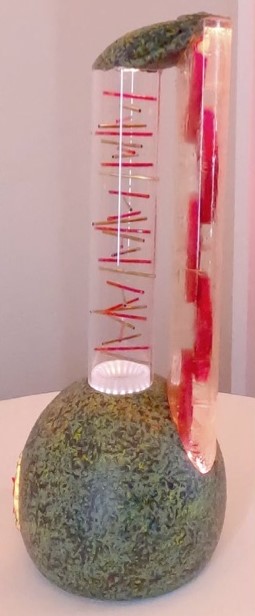 Musical Chimes Sound Generator (Elby Innovation): International Patent Portfolio
Musical Chimes Sound Generator (Elby Innovation): International Patent Portfolio
The quality of the environment at home and in the workplace is a function of several factors – colors, smells, textures, and sounds. Some consumers and businesses have resorted to buying devices that produce “white noise” or water fountains to create a neutral background sound that drowns out any unpleasant noises or as an alternative to dead silence. What is really needed in homes and businesses is an environment that is easy on the senses – sight, smell, taste, touch, and sound. An environment with the right background sounds can relieve tension, improve concentration, minimize tinnitus, aid in sleep, reduce boredom, and overcome distracting sounds.
This international patent family addresses that issue with a chime-based music generation system that is mounted within a device that has a chamber – a lamp or a vase, for example. The device covered by this portfolio includes a rotating belt or other means of transport that picks up beads from a reservoir at the bottom of the chamber and drops them from the top, hitting the chimes as they fall, creating pleasant and constantly changing music. The unit can be incorporated into a lamp or other device so it blends into the home or office décor.
Patent Portfolio
The acquirer or licensee of this portfolio will be able to create a device for the white noise product segment that produces an incredibly gentle and soothing musical background for any environment, and it can be offered in an unlimited variety of enclosures.
 Computer-Enabled Breadboard (Haim): U.S. Patent No. 11,363,713
Computer-Enabled Breadboard (Haim): U.S. Patent No. 11,363,713
Designing and troubleshooting electronic circuits – especially when validating circuit designs with real components on a breadboard – is time-consuming, labor-intensive, and can be downright confusing with a bird's nest of cables to deal with. A breadboard (a prototyping tool) is typically used to test the layout and functionality of a PCB (printed circuit board) and its electronics before actual PC boards go into production. What is clearly needed is a smart breadboard, a computer-enabled protoboard to replace the current generation of fixed circuit trace breadboards and PC boards that can replace them with a dynamic universal electronics hardware platform. This patent creates just such a solution.
This patent details a hardware platform that streamlines design-to-production as tested and approved circuit traces can be downloaded in an instant into a ready-made universal hardware platform that will fit inside any electronics device. Time and money are not wasted routing or printing multiple iterations of PC boards. The computer-enabled hardware platform created by this patent can be programmed by connecting it to a tablet or PC that has SaaS (Software as a Service) EDA (Electronics Design Automation) standalone or add-on software like Flux.ai, Altium, or any appropriate PCB-design program. A wireless pen can be used to draw circuits, interfacing with the tablet or PC via standalone or add-on software.
An additional feature for OEMs, universities, hobbyists, PC assemblers, and end-users is that the electronic device would come pre-programmed by the provider to monitor and catalogue via the cloud the user’s electronic equipment for failure and provide troubleshooting assistance in the form of AI (Artificial Intelligence) automatic circuit correction and AI voice assistant for end consumers. For those users, the electronic device would be able to reconfigure their circuits to redundant components in the event of a chip failure, keeping the device running and relieving the end user of much frustration…and saving time and money. In the same manner, latent chips hidden inside motherboards could be completely isolated until the end user buys an upgrade, saving the manufacturer and the end user time and money in logistics by not needing new-product deployments too frequently.
U.S. Patent No. 11,363,713 for a “System and method for trace generation and reconfiguration on a breadboard or printed circuit board” would be a strategic acquisition for any electronics OEM.
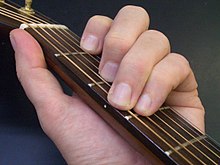 Linear Actuator Controlled Guitar (Smith): U.S. Patent No. 11,437,005
Linear Actuator Controlled Guitar (Smith): U.S. Patent No. 11,437,005
Even the most skilled guitar players are limited to just ten fingers and two hands, while a guitar has six strings that each produce 20 to 24 notes. For someone who has arthritis, carpel tunnel syndrome, a hand injury, or is older and does not have the dexterity of a younger person, playing a guitar can be difficult, painful, and frustrating. A person missing a finger or hand simply cannot play a guitar.
This patent revolutionizes the guitar and other stringed instruments by installing linear actuators in the hollow interior of the instrument. Each actuator is connected to a fret which projects from the neck of the instrument and is in contact with a taught string. The actuator controls each fret, and each fret acts like the bridge of a violin. When strummed or plucked, the string vibrates to generate perfect tones! Chords can be played with slide guitar transitions, if desired. Very difficult chords on a conventional instrument can now be played easily. In fact, new chords can be created that would be impossible to produce by hand on a regular guitar. In a recording studio, guitar parts can be recorded quickly and flawlessly right after a song is composed, helping songwriters write better songs!
U.S. Patent No. 11,437,005 for a “Multi-stringed musical instrument tunable by means of linear actuators” would enable any guitar manufacturer to leapfrog the technology of all its competitors and offer the first major improvement in guitars since the introduction of the electric guitar in 1936.
 Drone Powered Pest Control (Yu): U.S. and Chinese Patent Portfolio
Drone Powered Pest Control (Yu): U.S. and Chinese Patent Portfolio
When drones were first introduced, they were just for fun. Then cameras were added to make a drone an eye-in-the-sky. Commercial applications such as surveillance and package delivery soon followed. In fact, the largest operator of drones in the U.S. are the electric utilities that use drones to inspect their power lines. This portfolio creates yet another most ingenious application for drones – NO pesticide pest control!
This portfolio creates a drone that features a high-voltage trap that seeks, identifies, pursues, and zaps flying insects within its patrolling area. The drone has both a passive and active mode. The drone can land at a designated location and attract insects with light, sound, and scents, then electrocute them. Or the drone can hover close to insect nests and use its high-velocity propellers to produce a strong downdraft that disturbs the nest, forcing mosquitoes and other pests to scatter. The drone then pursues the fleeing insects, forcing them into contact with high-voltage electrified screens that zap them. Some insects are drawn into the fast-spinning propeller blades and are killed. The drone regularly returns to a charging pad that recharges the drone’s batteries.
A second drone configuration uses wide-bandwidth, high-energy acoustic wave generators to evict and eradicate non-airborne agricultural pests within its patrolling area. The drone hovers close to plants and emits high-energy acoustic waves that kill caterpillars, beetles, and other agricultural pests by forcing their bodies to vigorously vibrate. A drone based on this patent can also be used in hotel rooms to kill bed bugs! Most significantly, all of this pest control is done with the use of NO pesticides!
Patent Portfolio
This portfolio will enable any manufacturer of drones or other electrical and electronic devices to introduce a totally new concept in pest control that is chemical-free!
 Soft Start for Electrical Devices (Raymond): U.S. Patent Nos. 10,580,554 and 11,394,198
Soft Start for Electrical Devices (Raymond): U.S. Patent Nos. 10,580,554 and 11,394,198
It is a common occurrence in homes, offices, and businesses. A high-torque or high-current device clicks on, and the lights in the building flicker and other electrical devices dim. In some cases, PCs and other devices actually click off and have to re-boot. And sometimes a few circuit breakers pop and have to be reset. When a device that draws a significant electrical load clicks on, it draws power away from all the other devices in the building. In addition to the disquieting dimming of the lights, the large and immediate draw of power from the building’s electrical system can damage other equipment and even cause an electrical fire. There must be a way for high-torque and high-current devices to power up without shocking the entire electrical system of the building.
There is. These two patents add a “soft start” to any electric machine, device, or equipment. A soft-start product based on these patents creates a buffer that is inserted between the machine, device, or equipment and the building’s wiring. This soft-start product temporarily reduces the load and torque in the power train and electric current surge during start-up. The result is a softer start-up of any high-torque or high-current device. And that means less strain on the building’s electrical system, no dimmed lights, no power drop, no damage to other electrical devices in the building, and a longer life for the machine, device, or equipment that now has softer power start-ups. There is no need for special wiring or bringing in an electrician. The device created by this portfolio is plug-and-play. Just plug it into a wall outlet, then plug the high-torque or high-current device into it, and you are protected from power jolts at start-up.
U.S. Patent No. 10,580,554 for an “Apparatus to provide a soft-start function to a high torque electric device” and U.S. Patent No. 11,394,198 for a “Soft starter for high-current electric devices” would enable any electrical products manufacturer to offer a new line of value-added products to its customer base.
 Electric 3D Flame (Cullimore): U.S. Patent No. 10,900,627
Electric 3D Flame (Cullimore): U.S. Patent No. 10,900,627
Since man discovered fire, we’ve had a love affair with it. What is more comforting than a roaring fire on a cold winter night? Colleges launch their football seasons with a pep rally and bonfire. Every two years, the Olympic Torch is carried by a succession of runners from Greece to the location of the Olympics to light the Olympic Flame. We decorate our dining tables with candles. Churches use candles to signify the Light of God. We love fire – in large part because we have mastered it and we can control it. That is why house fires and forest fires are so devastating. They are fires we cannot control.
It is not always safe or practical or economical to have an actual fire. Sometimes we want the appearance of flames without the combustion, heat, smoke, and possible danger. That need is what this patent addresses. It creates a safe, non-combustion, natural flame effect using an RGB LED light source and lenses. The output of individually controlled LEDs is controlled by a flame-motion algorithm that simulates the motions of flames, and the look is enhanced by multilayer lenticular lens filters that refract the light waves emitted by the LEDs to create an amazingly real 3D flame effect!
U.S. Patent No. 10,900,627 for an “Apparatus and method for simulated 3D flame effect” would be a critical acquisition for any company that manufactures lighting products. This patented technology has applications in event lighting – night clubs, concerts, and sporting and other events – as well as lighting for retail displays, entrances, and fireplaces, plus outdoor architectural lighting for landscape, marine, and hospitality venues.
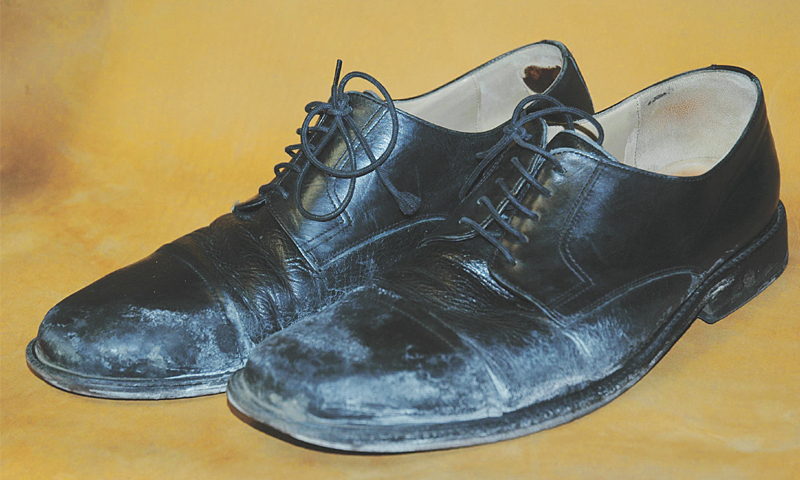 Electric Shoe Dryer (Karafinka): U.S. Patent No. 9,464,843
Electric Shoe Dryer (Karafinka): U.S. Patent No. 9,464,843
Wet shoes are uncomfortable and unhealthy. We’ve all been there. It is raining or snowing – or it was raining and snowing – and the streets, parking lots, and other surfaces are wet, and your shoes or other footwear get soaked. You take them off at night, but in the morning they are still wet and cold. Yuck. Brrrr. Grandpa back on the farm had a solution. He put his wet boots in front of the fireplace to dry. What does one do in the 21st Century with wet shoes other than put them on some newspaper and hope they dry out?
This patent addresses this need with a new category in home appliances – the shoe dryer. It is a simple device. You place your shoes, boots, or other footwear on a grate across the top of the device and it blows heated air across the shoes or other footwear to gently, but thoroughly, dry them. It includes a flexible pipe that also blows heated air into the insides of the footwear so they dry from both the outside and the inside. It includes a grate that catches mud and other debris from the wet shoes. It plugs into the wall like any other appliance. You can leave it in a permanent location so it is ready when you need it – like a toaster – or you put it away when not needed – like a vacuum cleaner – and bring it out and plug it in when needed.
U.S. Patent No. 9,464,843 for a “Shoe dryer” would be a critical asset for any manufacturer of electrical appliances that is ready to create and own a new marketing segment in the consumer electronics industry.
 Residential Stovetop Fire Suppression (Bohrer): U.S. Patent No. 9,700,745
Residential Stovetop Fire Suppression (Bohrer): U.S. Patent No. 9,700,745
A fire in the kitchen is the Number One cause of home fires. Each year in the U.S., there are roughly 187,000 residential kitchen fires! While state and local building codes require commercial and institutional kitchens to have extinguishers that sense a fire and automatically extinguish it, no such requirements exist for homes and apartments, so very few residential kitchens have any protection from a fire. In most cases, the person who was cooking was distracted by another person, or a visitor, or a phone call, or someone or something else, and that person walked out of the kitchen. The result was a disaster!
This patent creates a fire extinguisher that is mounted over a residential stove top. When it senses a fire, it automatically releases fire retardant that extinguishes the fire. It also cuts off electric power to an electric stove or gas flow to a gas stove to further minimize damage to the residence. A product created from this patent would be compact, affordable, easy to install, and a home and life saver. It might, in fact, pay for itself in reducing insurance premiums.
U.S. Patent No. 9,700,745 for a “Fire extinguishing system for stove tops” would be a strategic acquisition for any residential stove manufacturer that wants to add value to its product line, or any manufacturer of fire extinguishers looking to create and own a new market segment.
 Earphone Sterilization (Serino-Hann): U.S. Patent No. 10,251,962
Earphone Sterilization (Serino-Hann): U.S. Patent No. 10,251,962
The recent pandemic taught us a lot about proper hygiene. Like washing our hands regularly and not touching our fingers to our face or mouth. Our fingers touch everything – money, keys, door knobs, trash, countertops, and dozens of other surfaces – making them germ carriers. Just as we would not put something unsanitary in our mouths, we should not be putting something unsanitary in our ears. We take out our earphones with fingers that have been who-knows-where, lay them down on a surface of questionable cleanliness, and pick them back up and insert them with those same dirty fingers!
This patent provides an economical, practical, easy-to-use solution to unsanitary earphones. It creates a device that both stores and sanitizes your earphones. The device bombards the earphones with ultra-violet light (the same technology is used to treat drinking water) that is clinically proven to kill viruses and bacteria, thoroughly sanitizing the earphones without the use of any chemicals. No residue, smells, or other unpleasantries – just sanitary earphones that are ready to go!
U.S. Patent No. 10,251,962 for a “Single-pair earphone sterilizer with germicidal light” gives any earphone or consumer electronics manufacturer the opportunity to create a product for the hundreds of millions of earphone owners and users in the U.S. and elsewhere.
Combination LED/Smoke Detector (Athena): Four U.S. Patents
There was a time when cell phones just made phone calls. Today they are smart phones, and they take pictures and video, access your email, schedule your events, provide driving directions, and help you find the best chili in town. What happened to cell phones is about to happen to light bulbs and light fixtures. Since Thomas Edison invented the light bulb 140 years ago, the only major improvement has been the replacement of incandescent filament bulbs with LED fixtures. The next major advancement is here.
This intriguing patent portfolio converts an LED lamp into a combination lamp-and-smoke/CO/gas detector. No tools needed. Just screw it in. This portfolio enables each combo LED and smoke/CO/gas detector to communicate with each other and flash color-coded signals that guide residents to safety in the event of a fire or other emergency. They also broadcast warning messages, they are voice-activated, and they can be used to create an intercom system. These super-combo units can be used to supplement conventional smoke/CO/gas alarms, quickly install a smoke/CO/gas alarm where one is needed, be used in place of conventional smoke/CO/gas alarms, or be integrated into a Smart Home/Smart Office network. They run off rechargeable batteries so they work during power outages, and they can be configured to communicate with residents during an emergency.
Branded “LampLife Detector™” by the inventors, the products covered by this portfolio will forever change the lighting products, smoke/CO/gas alarm, and Smart Home/Smart Office industries! Applications include not just the replacement of current light bulbs with these multi-functional super-combo bulbs, the technology can also be incorporated into the next generation of residential and commercial renovations and all new construction to replace the unattractive conventional smoke/CO alarms with attractive lighting fixtures that perform multiple functions.
This portfolio will give any LED bulb manufacturer, or smoke/CO alarm manufacturer, or Smart Home/Smart Office equipment manufacturer, or systems integrator the opportunity to leapfrog all of its competitors and offer what will unquestionably be the next generation of LED lamps, smoke/CO/gas detectors, and Smart Home/Smart Office safety components!
Patent Portfolio
U.S. Patent No. 9,747,763: Networked audible and visual alarm apparatus and method of synchronized alerting
U.S. Patent No. 10,028,357: LED light bulb, lamp fixture with self-networking intercom, system and method therefore
U.S. Patent No. 10,176,805: Networked audible and visual alarm light system and method with voice command control and base station having alarm for smoke, carbon monoxide and gas
U.S. Patent No. 10,262,525: Networked audible and visual alarm apparatus for synchronized alerting with a base station and electronic coding for each alarm
This portfolio will give any LED bulb manufacturer, or smoke/CO alarm manufacturer, or Smart Home/Smart Office equipment manufacturer or systems integrator the opportunity to leapfrog all of its competitors and offer what will unquestionably be the next generation of LED lamps, smoke/CO/gas detectors and Smart Home/Smart Office safety components!
Zigbee is a registered trademark of Zigbee Alliance Corporation.
LampLife Detector is trademark of Athena Patent Development LLC.
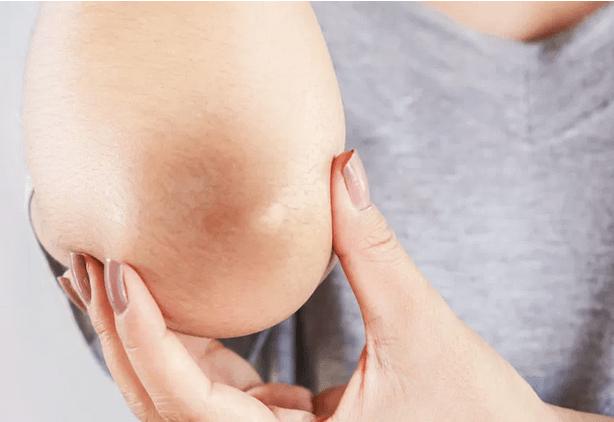 Specialized Skin Exfoliation (Perez): U.S. Patent No. 8,585,621
Specialized Skin Exfoliation (Perez): U.S. Patent No. 8,585,621
The skin is the largest organ in the human body. The outer layer of skin is continually dying and being replaced by new skin that replaces it. When a person gets a tan, that tan is a layer of darker, dead skin. Elbows, however, create a special problem. Dead skin builds up on the elbows, causing them to get darker and darker, creating a condition known as “Dark Elbows.” While Dark Elbows are not a health hazard, they can be very unattractive. This patent creates a device that specifically addresses Dark Elbows and other specialized skin exfoliation needs.
This patent creates a tabletop or floor-based skin exfoliation device that is enclosed in a housing. The user turns it on and places his or her elbows on the top surface of the device. The vibrating abrasive surface gently cleans away the dead skin from the elbows, eliminating Dark Elbows, and leaving a consistent skin tone on the user’s arms. The unit can also be placed on the floor, and the user can place his or her feet on the device to remove dead skin from the heels and soles of the feet. For the treatment of Dark Elbows, and for exfoliating feet, this device is clearly superior to the current generation of handheld exfoliation devices that are on the market.
U.S. Patent No. 8,585,621 for a “Skin exfoliation apparatus” would be a strategic acquisition for any manufacturer of exfoliation products looking to expand its product offerings, or for any medical device manufacturer seeking to expand into the huge exfoliation market with a unique, patent-protected product.
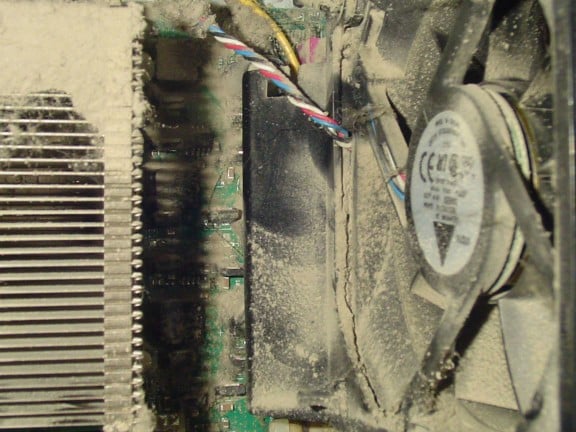 Advanced Cleaning of Electronic Equipment (Fitzpatrick): U.S. Patent No. 9,844,306
Advanced Cleaning of Electronic Equipment (Fitzpatrick): U.S. Patent No. 9,844,306
The biggest single enemy of electrical and electronic equipment is dust. Over time, dust settles on the surface of electronic components. In fact, dust is actually attracted to electronic devices. Most electronic equipment has a cooling fan that draws air – and the dust in the air – into the insides of the equipment. Dust is neutral – that is, it has neither a positive nor negative charge – causing the dust to drift toward the positive charge on the electronics and stick to them. Additionally, as dust is drawn into the device by the cooling fan, it has moisture from the outside air. The hotter air in the inside of the electronics equipment dries the dust, causing it to stick to the insides and not pass out of the unit with the exhaust air.
So – for multiple reasons – dust collects on the insides of electronic equipment from PCs and office equipment to electric tools and televisions. When enough dust builds up, it blocks the flow of air, and that can cause the device to overhead and fail. Not good. Every electronic device needs to have its insides “de-dusted” on a regular basis. This patent creates a downdraft table that is specially designed to quickly, easily, effectively, efficiently, and affordably remove dust from any electrical or electronic device or component. It uses both positive and negative air pressure to thoroughly remove all dust. Air is blasted against the insides of the device over a grid, while a fan below the grid creates a downdraft that pulls dust down and into the unit so it is not simply blown off the electronic components and into the air in the room. The table is grounded with a wire that connects to the electronic device being cleaned to protect from an electrostatic charge that could damage the device while it is being de-dusted.
U.S. Patent No. 9,844,306 for a “Downdraft table for cleaning electronic equipment” would be an excellent acquisition for any manufacturer of electronic cleaning, testing, or servicing equipment that is ready to offer an advanced cleaning apparatus for electronic equipment. One possible configuration is an electronic equipment cleaning vending machine for electronics retailers. Customers bring their electronic products into the store and use the vending unit to de-dust their own equipment. The unit can be built with wheels so it can be rolled from location to location within a facility, and a filter can be added to collect the dust. The inventor has working prototypes so the acquirer of this patent can go to market very quickly!
 The Better Cup of Coffee (Valiquette): U.S. Patent No. 10,624,491
The Better Cup of Coffee (Valiquette): U.S. Patent No. 10,624,491
What does everyone really want? A better cup of coffee! Coffee that is rich and satisfying, but never bitter. Conventional coffee brewing uses hot water and ground coffee beans to make brewed coffee. This hot brew process picks up the bitter acids along with the desired solubles in the coffee beans and carries them into the brewed coffee. This gives coffee the harsh or bitter taste it can often have. So, how do we get that perfect cup of coffee that can be enjoyed hot or iced?
The solution is cold-brew coffee from a two-chamber coffee maker that uses vacuum pressure to make a completely delightful cup of coffee. Most currently available cold-brew coffee makers use room-temperature water, lots of ground coffee, and lots of time. It can take up to 24 hours or more to complete this process, so they are not very practical. Other coffee makers use pumps to circulate water to try and speed up the process, but the result is the same – under-brewed coffee that has a tangy flavor and uses way more coffee than traditional methods.
The invention covered by this patent takes cold-brew coffee to the next level. It vacuum-brews coffee in minutes, and it extracts more flavor and less acid. The result is an incredibly delicious coffee that can be heated or cooled to the desired temperature immediately after brewing. Dual chambers keep the water separated from the coffee grounds until brewing takes place. This helps prevent mold and bacterial growth that could occur if the coffee and water were mixed and allowed to sit at room temperature. During the brew process the water is drawn from the serving vessel into the brew chamber where the brewing process takes place. Upon completion of the brew process, the vacuum is released and atmospheric pressure pushes the brewed coffee through a filter and back into the serving vessel. This separates the grounds and unwanted oils from the brewed coffee. The vacuum extraction process covered by this patent extracts a greater percentage of the desirable dissolvable solids and flavors in the ground coffee. This means you use less ground coffee to make a properly brewed cup of coffee compared to other cold-brew methods – far more in line with what you would expect for a common drip coffee maker.
U.S. Patent No. 10,624,491 for a “Vacuum brewed beverage apparatus” would be a strategic acquisition for any commercial or consumer appliance manufacturer, especially those currently offering coffee-brewing products. The patent is available for license or acquisition, and a working prototype is available that will reduce time-to-market for the acquirer of this patent.
U.S. Patent No. 10,543,424 for a “Programmable hand-held video gaming controller with integrated foot-pedal gaming controller platform” comes with a continuation, U.S. Patent Application 16/699,253, and this portfolio is available for licensing or acquisition. This patent would support a wide selection of products for a licensee or be a strategic acquisition for any video game console or video game accessories manufacturer. The continuation application enables the acquirer of this portfolio to take this invention to the next level with additional patents that share the Claims and Priority Date of the granted patent!
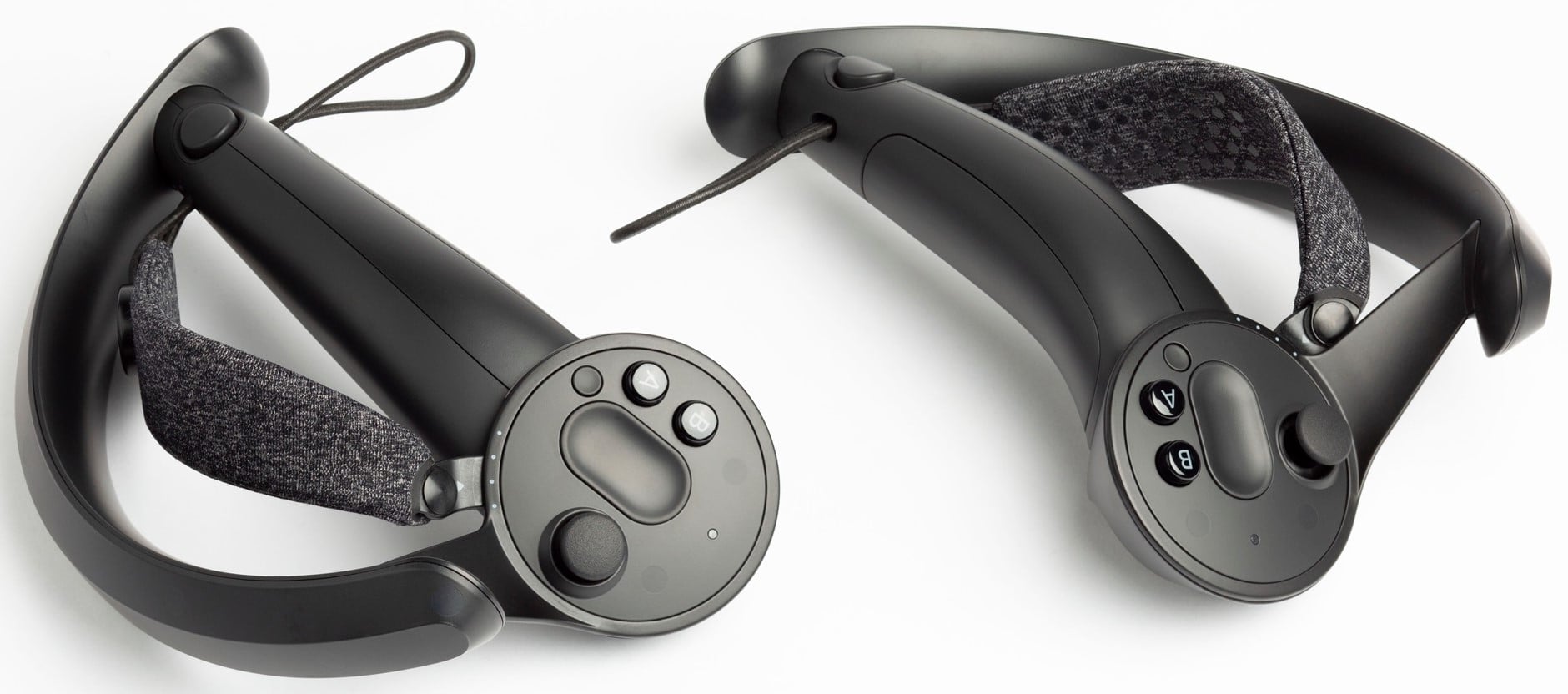 Free-Space Control with Feedback (Quantium Systems): U.S. Patent No. 10,101,157
Free-Space Control with Feedback (Quantium Systems): U.S. Patent No. 10,101,157
Joysticks give users of video, virtual reality or augmented reality games – as well as operators of a wide variety of industrial machinery and equipment – greater mobility in directing and controlling the device or machinery. But a joystick must be two-handed or be mounted to a fixed surface, and that severely limits the input of the user. What users want is a control device that provides complete ambulatory movement and immediate torque responses as direct feedback to the user.
This patent creates a force feedback system that can be mounted to any input device and will provide its operator with complete ambulatory movement. The device detects the operator’s position, and receives both motion and torque input so it can interactively impart command torque vector force with from one to six degrees of freedom. At the same time, it provides highly realistic force feedback to the user of the input device. This patent creates a Multiple Axis Counter Spinning Disk that is mounted to the input/output device so it feeds back to the user command torque vectors. In other applications, the Multiple Axis Counter Spinning Disk may also be used to cancel the effect of external torque by creating an increased moment of inertia to the attached object in order to improve its angular stability and precision.
U.S. Patent No. 10,101,157 for a “Free-space force feedback system” will give its acquirer the ability to introduce the next generation of input control devices for video, virtual reality and augmented reality games and devices, as well as provide improved controls for other products that currently use a joystick such as cranes, winches, marine equipment, agricultural and forestry machines, construction equipment, material handling vehicles, robotics, medical apparatus, and factory production lines.
 Never Get Locked Out Again (United Wellness): Two-Patent Portfolio
Never Get Locked Out Again (United Wellness): Two-Patent Portfolio
Conventional keys are going the way of pay phones and video rental stores. Multiple technologies are competing to offer smarter lock-and-key technology. This portfolio addresses that technology from two angles – first with an improved button that you use to activate a key, and second with wireless or Bluetooth connectivity that does not require an app for your smartphone.
The first patent covers what is essentially a button-pressing kit. It has a fixed plate that is attached to a transmitting device with a depressible button on its exterior. It uses a mechanical button that activates an electrical switch when depressed. There is a resilient ball between the button and an axially rotating plate. Rotation in one direction depresses the button, and a motor can cause this axial rotation. If the pressure on the button is too great, it can be considered depressed and the motor will rotate in the other direction, sending the movable plate back to its starting point. To depress the button, specific input – such as on a tactile sensor – may be needed. The resilient ball can actually stick to the button via an adhesive connection, thus the term “sticky ball” in the patent title.
The second patent addresses the challenge created by all of the remote-control devices in use today – devices for televisions, garage doors, home and office doors, gate locks, automobiles, window shades and drapes, and many other items. This patent uses the same transmission devices provided by the manufacturer, but each device uses a mechanical push button (from the first patent) that is pressed to operate the transmitter. It can be tapped, vibrated, or communicated with via a second, distinct wireless transmission. The user can use his or her smartphone or another hand-held wireless device to send a code that prompts mechanical movement that opens or unlocks the desired device or equipment. The wireless transmission can be a password via a short-range wireless connection between the wireless transmission device and the housing that contains the button.
This portfolio includes U.S. Patent Nos. 9,798,349 for a “Button pressing device with moving plate and sticky ball” and U.S. Patent No. 10,042,381 for a “Double wireless receipt and transmission with mechanical movement causing second wireless transmission.” This portfolio would be a strategic acquisition for any business in the Smart Home/Smart Office segment, a company currently making conventional key-and-lock products or remote locks such as garage-door openers, or a business looking to enter the Smart Home/Smart office business segment with next-generation technology.
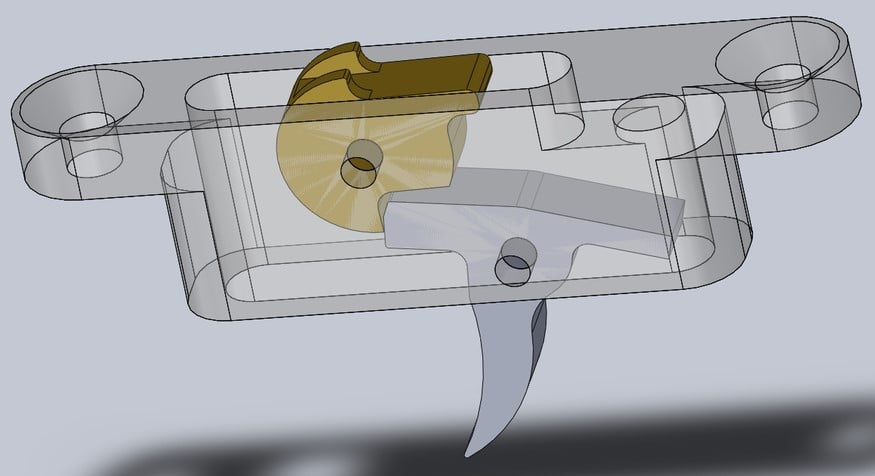 Rolling Trigger (Arduini): U.S. Patent No. 8,522,466
Rolling Trigger (Arduini): U.S. Patent No. 8,522,466
It is not just guns that have triggers. Many devices – from saws, drills, sanders and toys to clutches, turbines and engines to hydraulic and pneumatic machinery and equipment – use a trigger to activate them. This patent takes triggers to the next generation by creating a rolling trigger that uses a roller bearing or bearings with very low friction to move past an over-center trigger point position and release a very high-force striker/armature assembly that transform high static, potential stored energy into high-dynamic, released energy. The solution offered by this patent is that there is no hint of the approaching trigger point for the user, and no changes in trigger pressure over the trigger’s travel distance, insuring precise activation of the device.
The patent also includes counterbalance weights to prevent external forces such as vibration or shock from triggering a false or unwanted triggering event, as well as a trigger-movable link to a movable armature, piston or striker, or firing pin. The invention additionally provides for storage of very high-static or potential energy to easily be released into high-moving or kinetic energy.
U.S. Patent No. 8,522,466 for a “Low force rolling trigger” would be a strategic acquisition for any manufacturer of firearms, tools, electronic games, or industrial machinery or equipment that wants to differentiate its products from the competition by offering an improved trigger mechanism.
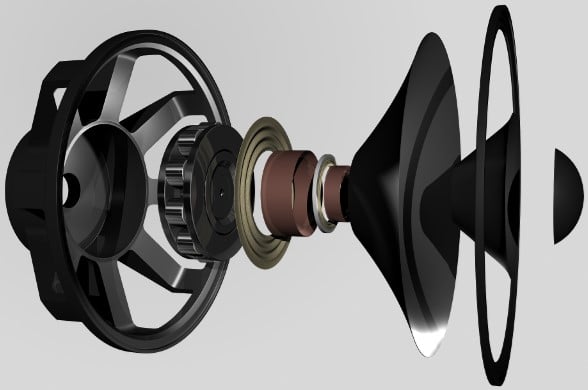 Next Generation Coaxial Loudspeakers (Novinex): International Patent Portfolio
Next Generation Coaxial Loudspeakers (Novinex): International Patent Portfolio
The “Magnexial” technology covered by this portfolio uses a perpendicular magnet arrangement to yield larger air-gap induction in a loudspeaker. The result is clearly superior acoustics in three important dynamics:
The magic behind Magnexial technology is perpendicular magnetic polarization and the arrangement of the speaker’s components. In current-generation coaxial loudspeakers, the arrangement of the magnets, ferrite cores and voice coils determine the strength of the magnetic field in the air gaps where voice coils move, a key factor that determines the characteristics of the loudspeaker. Magnexial technology arranges the inner-ring and outer-ring magnets perpendicular so there is north-and-south-pole magnetic polarization. The result of this critical design change is that the magnetic field within the air gaps – this is where voice coils move – is much stronger, producing higher performance and better sound quality. Additionally, the Magnexial placement of magnets can be used to reduce the size of the speaker, reducing raw material costs.
Patent Portfolio
U.S. Patent No. 9,538,290: Coaxial loudspeaker arrangement
European Patent 2896218: Coaxial loudspeaker arrangement
Japanese Patent 6242398: Coaxial loudspeaker arrangement
Chinese Patent 104782143: Coaxial speaker construction
Hungarian Patent 230260: Coaxial loudspeaker arrangement
Korean Patent Application 20150056822: Coaxial loudspeaker arrangement
Canadian Patent Application 2885171: Coaxial loudspeaker arrangement
PCT Patent Application 2014045070: Coaxial loudspeaker arrangement
This portfolio would be a critical acquisition for any global supplier of sound equipment, giving the acquirer of this portfolio the next generation of loudspeakers with patent protection on three continents!
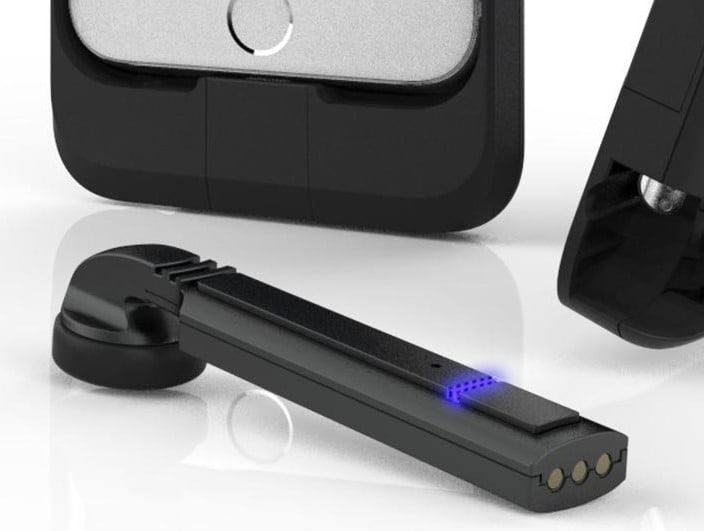 Integrated Wireless Headset for Electronic Devices (Beal): U.S. Patent No. 9,467,763
Integrated Wireless Headset for Electronic Devices (Beal): U.S. Patent No. 9,467,763
Remember when you had both a cell phone AND a camera? The two technologies have merged. Today, smart phones take both still images and videos. You can also use them to surf the web, link you to friends and family, keep your appointments, provide driving directions, and serve as your ticket when you go to the movies. Oh, and they also send and receive phone calls!
Merging several devices into one smarter device is what technology is all about today, and that is what the integrated headset covered by this patent does. It eliminates the need for a separate charger for your headset, saving you time, space, money and aggravation. This patent creates a headset that charges as the device to which it is attached is also charging. That saves time. It eliminates the need for two chargers – one for the device and a second for the headset – and that saves money. The headset can easily be stored with the device. That saves space. And since the headset is small enough that it can be stored with the device, the likelihood that it will get lost is greatly reduced. That can save a ton of aggravation! The technology covers both mono and stereo sound delivery, and the headset connects to virtually any device. You can use the same headset to listen to your iPod, smartphone, PDA, PC, desktop, car radio, home entertainment system, you name it. It also connects to the smart and sport watches coming onto the market, and it will connect to whatever technology comes next!
U.S. Patent No. 9,467,763 for an "Integrated Wireless Headset for Electronic Devices" would be a critical acquisition for any company in the audio or consumer electronics sector that is ready to create – and own with patent protection – a totally new market segment!
 Obtaining Information about Overhead Aircraft (Wessels): U.S. Patent No. 8,599,066
Obtaining Information about Overhead Aircraft (Wessels): U.S. Patent No. 8,599,066
We spot airplanes in the sky every day. Many people wonder if the aircraft is military, commercial or personal, as well as where it is going. This patent covers technology that creates a device that airplane aficionados can use to answer those and other questions about an aircraft they spot in the sky and that piques their curiosity. The system created by this patent creates a communication device that determines the estimated location of the aircraft, a flight database that includes data about a specified aircraft based on a provided location, and a network that enables communication between the handheld device and the flight database. The communication device provides the estimated location of the sighted aircraft to the flight database, and the flight database provides information on the sighted aircraft back to the communication device – similarly to how navigation devices communicate road and traffic data back and forth between the user device and the GPS database.
U.S. Patent No. 8,599,066 for a "System, method, and apparatus for obtaining information of a visually acquired aircraft in flight" would be a significant acquisition for any consumer electronics or navigation device manufacturer that is prepared to create and own a new product segment – an aircraft information device for airplane junkies!
 Laser Pick-Up of a Stringed Instrument (Wessels): U.S. Patent No. 8,431,814
Laser Pick-Up of a Stringed Instrument (Wessels): U.S. Patent No. 8,431,814
Since Thomas Edison invented sound recording over 100 years ago, there has been an ongoing challenge: Recording JUST the music and NOT any of the background noise. This patent addresses that challenge by using a laser beam and a photodetector that converts the detected light into electrical signals. The laser beam is deflected off the strings of the guitar, violin or other stringed instrument, and the photodetector sends electric signals that provide sound to an amplifier! No microphone is used, so there is NO background noise. Also NO echos, NO interference, NO air conditioning fan, NO distortion. Just the music being generated by the strings of the instrument is picked-up and recorded!
U.S. Patent No. 8,431,814 for a "Laser pick-up for a stringed musical instrument" covers the most significant advancement in music technology since multitrack recording! The company that acquires this patent will be able to offer next-generation recording of guitar, violin and other stringed instruments that will be far superior to any microphone-generated recordings!
 Video Display Viewing Angle Correction (Flex Creations): U.S. Patent No. 8,854,553
Video Display Viewing Angle Correction (Flex Creations): U.S. Patent No. 8,854,553
The image a person sees on a large-screen television or computer monitor is best if that person is sitting directly in front of the screen. Even the newer, curved screens create a distorted image for those who are not sitting directly in front of the screen. Being able to mount a television screen – especially HD TV – so that everyone in the room has an optimal view is either very difficult or just not an option. With 3D and 4D screens, the viewer must be directly in front of the screen to enjoy the dynamic picture quality. Until now, the only option was to mount the TV screen on a bracket that would put it at the optimal angle for viewing.
The technology covered by this patent addresses that issue, using software to adjust the angle of the image on the screen to where the viewer or viewers are sitting. And the adjustment is made totally through software, so no hardware modifications need to be made! U.S. Patent No. 8,854,553 for "Video Display Correction to Provide On-Axis View at an Off-Axis Angle" will enable its acquirer to leapfrog the technology of all of its competitors and offer a next-generation viewing experience! This patent would be a critical IP asset for any television OEM.
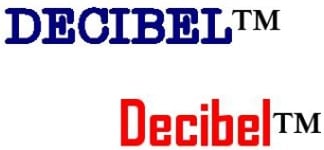 “DECIBEL” (EpiCrystals): International Trademark Package
“DECIBEL” (EpiCrystals): International Trademark Package
The word “decibel” is an international term for the measurement of audio volume. It translates – or almost translates – into any language. In German it is “dezibel” and in French it is “décibel.” Available for acquisition are the international rights to the “Decibel” trademark. The word is trademarked in Taiwan, China and Japan, as well as Finland. It also has a European Union trademark, and it carries an International Trademark (Serial No. 831245) from WIPO (the World Intellectual Property Organization).
A seller or manufacturer of audio products and equipment can acquire this instantly recognizable trademark to create an incredibly valuable international brand!
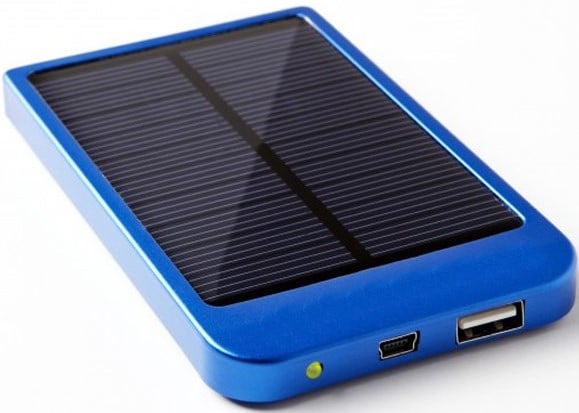 Solar-Powered ReChargeable Device (Oakley): U.S. Patent and Two Continuation Applications
Solar-Powered ReChargeable Device (Oakley): U.S. Patent and Two Continuation Applications
Imagine being able to charge your smart phone or laptop – even your car, truck, boat, ATV or motorcycle – from anywhere! At the beach, in the woods, camping or fishing, or at a construction site or other remote location that does not have conventional AC power. That problem is solved by the invention covered by this portfolio! The charging device covered by this portfolio includes a concentrator configured to collect and direct solar radiation towards a solar panel. The concentrator enhances the efficiency of the solar panels to generate optimal electric current. And…the concentrator permits the use of a much smaller solar module with greater photo-efficiency by reducing material and manufacturing costs.
This portfolio includes U.S. Patent No. 9,166,424 for a "Solar powered rechargeable device for use with an electronic device and method thereof," plus U.S. Patent Applications 14,886,551 and 15/864,130, and would be a strategic acquisition for any consumer electronics or automotive OEM, or any company serving the consumer electronics and automotive aftermarkets.
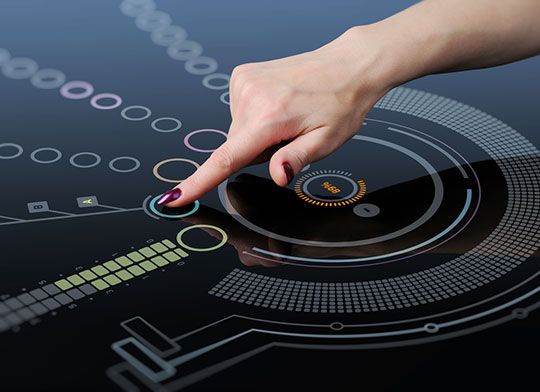 Next Generation User Interfaces (HonHai Precision): 10 U.S. Patents
Next Generation User Interfaces (HonHai Precision): 10 U.S. Patents
This portfolio discloses dynamic user interfaces that provide several key advantages over current technology:
| Patent No. | Description |
|---|---|
| 8,250,471 | Electronic devices and method for controlling the user interface thereof |
| 8,302,027 | Graphic user interface management system and method |
| 8,335,997 | Electronic device and method for sorting menu options of a program menu in the electronic device |
| 8,433,049 | Communication device and communication method thereof |
| 8,471,813 | Handheld electronic device and function control method thereof |
| 8,521,791 | Electronic device and file management method |
| 8,624,928 | System and method for magnifying a webpage in an electronic device |
| 8,660,314 | Motion-controlled device and method thereof |
| 8,837,783 | Motion-controlled electronic device and method therefor |
| 8,913,038 | Electronic device and electronic reader device with a proximity sensing button |
This portfolio would be a key acquisition for a manufacturer of mobile phones, televisions, laptop and desktop computers, tablets, gaming consoles and eBook readers.
 Wearable Modular Strap (Moixa): U.S. Patent No. 7,618,260
Wearable Modular Strap (Moixa): U.S. Patent No. 7,618,260
U.S. Patent No. 7,618,260 “Wearable Modular Interface Strap" relates to supporting multiple modules that are electronically and mechanically connected to the strap. The technology covered in this patent has multiple applications:
This patent would be a key acquisition for any business currently in the fast-growing wearable electronics market, or a business seeking a foothold in that segment.
 iConnect® Trademark: U.S. Trademark Registration 3538782 and EU Application Reference 3064140
iConnect® Trademark: U.S. Trademark Registration 3538782 and EU Application Reference 3064140
This Standard Character Mark is valid in both the United States and the European Union, and is applicable to electronic devices and the next generation “connected cars.” An alliance of Audi, GM, Google, Honda, Hyundai and NVidia are developing an Android-based platform for automobiles. Along a similar track, Apple announced Apple CarPlay that enables an iPhone to take over the in-dash display of an automobile with the Siri voice addressing aspects such as navigation, calling functions, messaging and music. Both of these new technologies are ideal applications for this trademark.
The iConnect trademark would be a significant acquisition for companies selling electronic devices or, more specifically, products and services related to automotive communications and connectivity.
Patent Brokerage Prospectus: Contact [email protected] to receive an analysis of each portfolio that includes:
We offer patents in these technologies:

